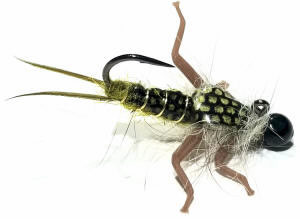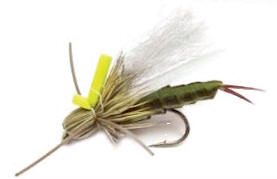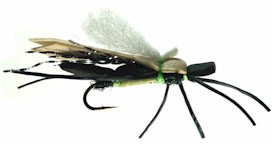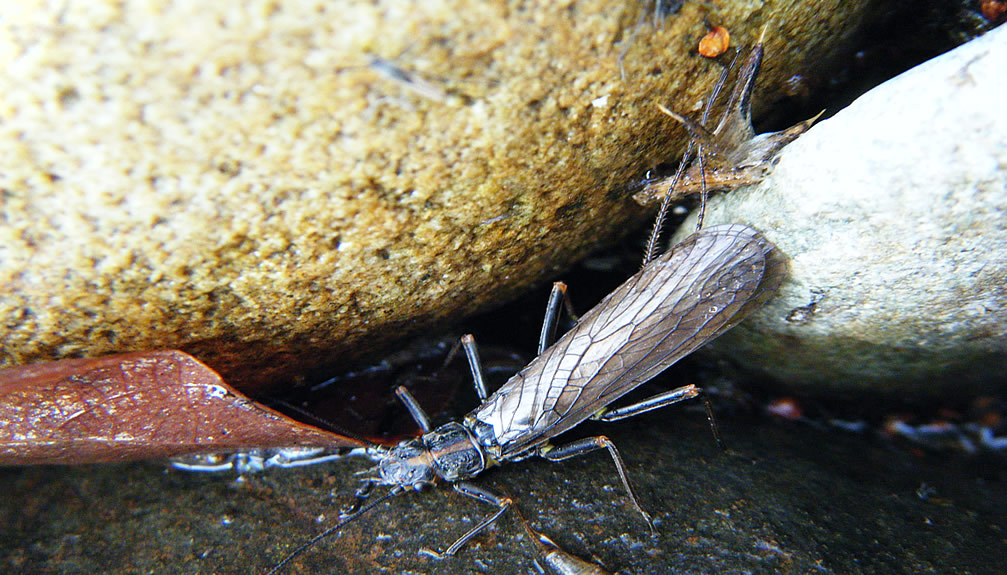|
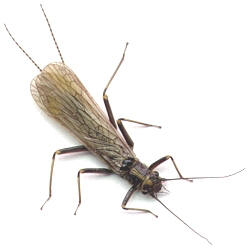 When I first began fly fishing the Yakima in the late 1980's, the chatter with area fly fishermen
and guides alike had always revolved around a Golden Stone hatch that appeared on the waters of the Yakima River, sometime during the month of February. To me, that always seemed a bit odd and much to early for a Golden Stone
species that typcially hatches in the warmer climates of mid summer. However,
anything is possible, since the Central Washington climate and conditions were much warmer than I was use to seeing at that time of year. When I first began fly fishing the Yakima in the late 1980's, the chatter with area fly fishermen
and guides alike had always revolved around a Golden Stone hatch that appeared on the waters of the Yakima River, sometime during the month of February. To me, that always seemed a bit odd and much to early for a Golden Stone
species that typcially hatches in the warmer climates of mid summer. However,
anything is possible, since the Central Washington climate and conditions were much warmer than I was use to seeing at that time of year. The Kittitas Valley is classified as
a semi-arid desert climate and the Central Washington
desert is only a short drive to the east. The
mighty and massive, Columbia River divides Kittitas County and Grant
county and the unique, temperate difference between these two regions is diverse, within their distinctive landscapes. The Montana rivers I grew up fishing hadn't produced a Golden Stonefly hatch, until the
early summer months of the season. After closer examination of
a sample species of the Yakima River Skwala by a University of Davis entomologist and close family friend, this early spring stonefly was correctly identified as the Skwala Stonefly,
not what was preceived to be as the Golden Stonefly vareity. This size 8 to 10 Stonefly sets in
motion a host of exceptional post winter or early spring dry fly fishing. There are infinite numbers of the Skwala Stoneflies in the Yakima River, and their populations contribute to a large portion of the insect bio-mass in
the Upper River. They are second only in population to their much later processors, the Summer Stone or Short Wing Stonefly. In a normal winter and early spring you should begin seeing tell tale
signs of adult activity by mid to late February. This hatch can begin around that time frame and continue on well into the month of April. Generally we are looking for water tempertures to reach (42°) forty two degrees or better. Of course as
the air temperture increases, we risk the possibility of experiencing a high water event with snow pack run-off beginning. So timing can be everything when it comes to good Skwala fishing.
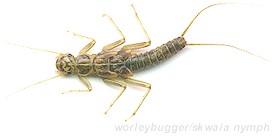 If a high water event does occurs, then a sudden drop in water temperature will
most likely retard the hatch and the migration of stonefly nymphs. Their emergence cycles in most cases become dormant again during this period. Once the river conditions
improve, the emergence originates again and the stoneflies begin convening along the banks of the river in masses. This cycle can play out several
times over a season, when unruly water conditions are constantly changing due to irregular weather patterns. If a high water event does occurs, then a sudden drop in water temperature will
most likely retard the hatch and the migration of stonefly nymphs. Their emergence cycles in most cases become dormant again during this period. Once the river conditions
improve, the emergence originates again and the stoneflies begin convening along the banks of the river in masses. This cycle can play out several
times over a season, when unruly water conditions are constantly changing due to irregular weather patterns. 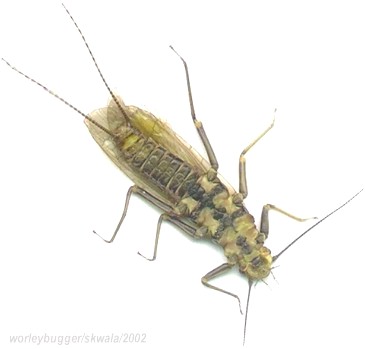 The Skwala
Stonefly is common in many streams, creeks and rivers throughout the
entire western United States. The Skwala
Stonefly is common in many streams, creeks and rivers throughout the
entire western United States.
The Skwala Stonefly
can be found in California, Colorado, Idaho,
Montana, New Mexico, Nevada, Oregon, Utah, Washington, and Wyoming. There size will range from 8 to16mm
depending on the gender of the species. The female is of
course larger as in most stonefly species that are found. There normal emergence period
begins around the middle of February and water temperature is ususally the key factor in there emergence.
It must be in the middle to middle to high 40's before we begin to see them
emerging in great numbers. Like many stonefly speices, the afternoon and evenings are the best times to see this stonefly
and when they are most active. Because they are a post winter stonefly, their activity is generally very slow especially when the females are lying eggs on the water. Like other stoneflies that generally will take flight across the
water, Skwala Stoneflies generally exhibit this behavior. Not always, but in most circumstances they will amass along the banks and after procreation, the female will slowly crawl out along the waters
edge to begin the egg laying process. They drift naturally with the current, slowly disengaging the black eggs. Of course this is why we find trout that are keyed in on Skwala Stoneflies to be
holding closely to bank and these migration areas.
|




 If a high water event does occurs, then a sudden drop in water temperature will
most likely retard the hatch and the migration of stonefly nymphs. Their emergence cycles in most cases become dormant again during this period. Once the river conditions
improve, the emergence originates again and the stoneflies begin convening along the banks of the river in masses. This cycle can play out several
times over a season, when unruly water conditions are constantly changing due to irregular weather patterns.
If a high water event does occurs, then a sudden drop in water temperature will
most likely retard the hatch and the migration of stonefly nymphs. Their emergence cycles in most cases become dormant again during this period. Once the river conditions
improve, the emergence originates again and the stoneflies begin convening along the banks of the river in masses. This cycle can play out several
times over a season, when unruly water conditions are constantly changing due to irregular weather patterns. The Skwala
The Skwala